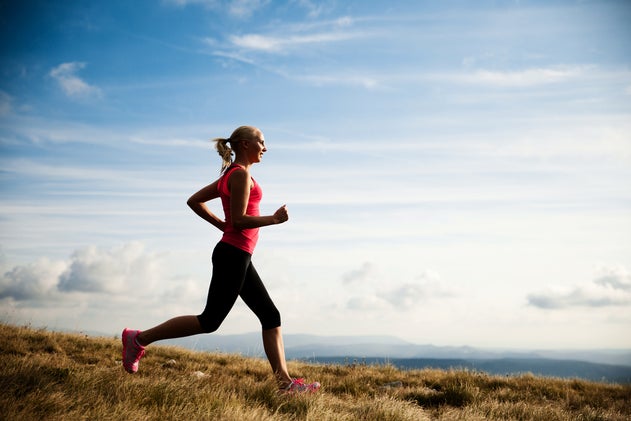Exercise may be the best medicine for chronic achy knees.
The Best and Worst Exercises for Bad Knees
"Strengthening the muscles around the joint protects you from injury by decreasing stress on the knee," says Willibald Nagler, MD, chairman of rehabilitation medicine at New York Presbyterian Hospital-Cornell Campus in New York City.
But you must use good form and technique.
The First Commandment
Never bend your legs to a point where your knees stick out past your toes. That puts a lot of pressure under the kneecap. This not only applies to the following exercises but also when you're stretching or doing aerobic activities such as step aerobics.
Except where stated, do 10 to 12 repetitions of each of the following, two or three times a week.
Best Exercises to Do
Partial Squats
Stand about 12 inches away from the front of a chair with your feet about hip-width apart and your toes forward. Bending at the hips, slowly lower yourself halfway down to the chair. Keep your abs tight, and check that your knees stay behind your toes.
Step-Ups
Using an aerobic step bench or a staircase, step up onto the step with your right foot. Tap your left foot on the top of the step, and then lower. As you step up, your knee should be directly over your ankle. Repeat with your left foot.
Side-Lying Leg Lifts
Wearing ankle weights above the knee, lie on your left side, legs straight and together, with your left arm supporting your head. Keeping your right foot flexed and your body straight, slowly lift your right leg to about shoulder height, then slowly lower. Repeat with your left leg.
Inner-Thigh Leg Lifts
Wearing ankle weights above the knee, lie on your left side, slightly back on your butt. Bend your right leg and place it behind your left leg with your right foot flat on the floor and your left leg straight. Support your head with your left arm. Slowly lift your left leg about 3 to 5 inches, then lower. Repeat with your right leg.
Calf Raises
Using a chair or wall for balance, stand with your feet about hip-width apart, toes straight ahead. Slowly lift your heels off the floor, rising up onto your toes. Hold, then slowly lower.
Straight-Leg Raises
Sit with your back against a wall, left leg straight and right leg bent with your foot flat on the floor. Slowly raise your left leg straight up about 12 inches off the floor. Hold, then slowly lower. Repeat with your right leg.
Short-Arc Knee Extensions
In the same starting position as the straight-leg raises, put a ball (about the size of a basketball) under your left knee so that your leg is bent. Slowly straighten your leg. Hold, then slowly lower. Repeat with your right leg.
Hamstring Stretch
Lie on your back with your left leg flat on the floor. Loop a towel or rope around your right foot and pull your leg as far as comfortable toward your chest, while keeping a slight bend at the knee. Keep your back pressed to the floor throughout the stretch. Hold for 10 to 30 seconds and then release. Repeat three or four times with each leg. Do this stretch five or six times a week.
Worst Exercises—Avoid These
A few of the following exercises can be done safely if you have chronic knee problems, but they're on this list because they're more likely to be done improperly. The exercises above are safer, while still giving you similar results.
- Full-arc knee extensions
- Lunges
- Deep squats
- Hurdler's stretches











 mx43
mx43


